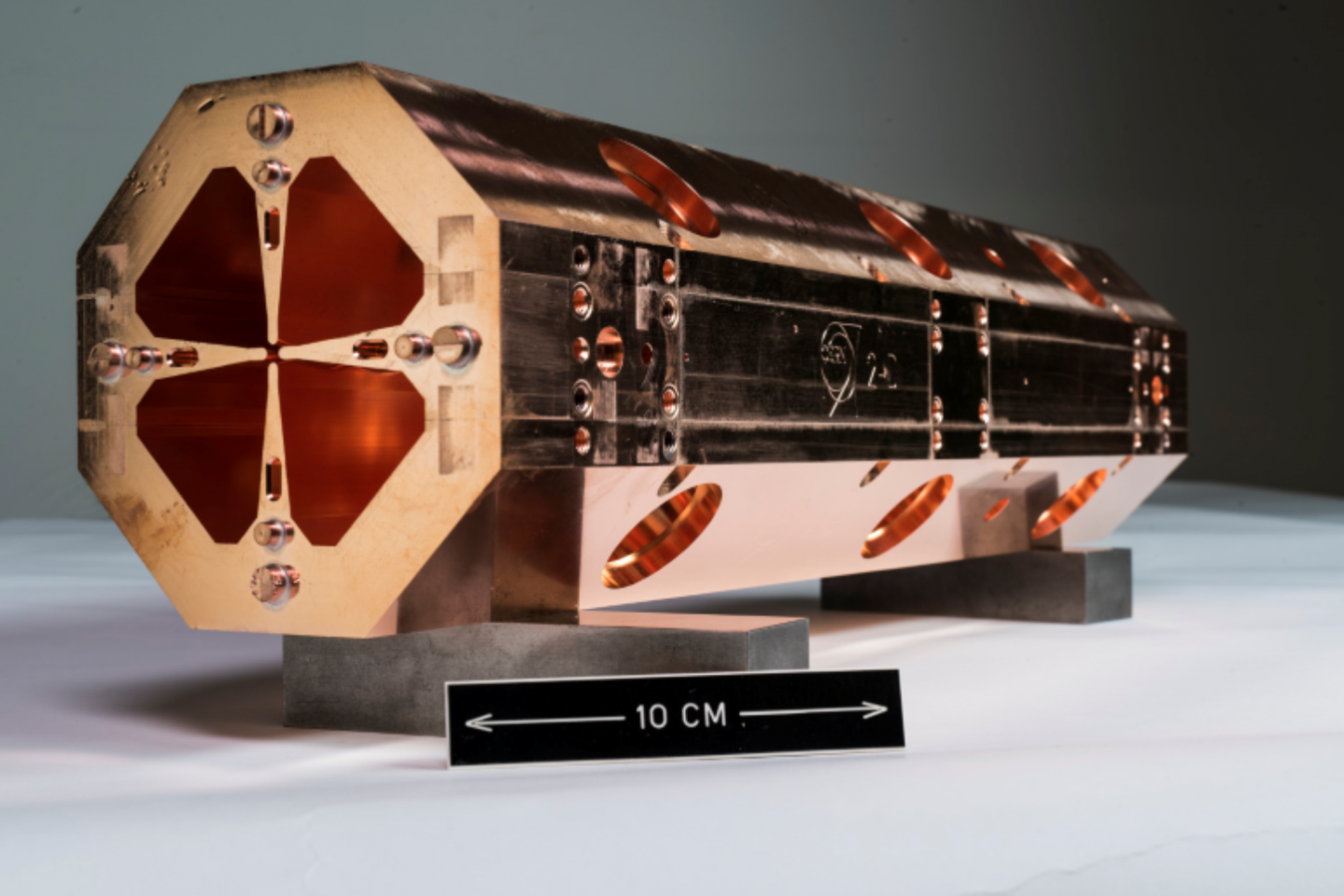In the frame of its programme for medical applications, and building on its experience with the LINAC4 injector (the first stage in the Large Hadron Collider accelerator chain), the High-Frequency Radio Frequency Quadrupole (HF-RFQ) was constructed with the goal of providing a compact, low-current injector for a proton therapy linear accelerator.
It is a suitable alternative to cyclotrons for use in medical applications, for example as a stand-alone accelerator or as an injector for larger high-energy accelerators, and adaptable to the power availability and portability needs of other applications such as medical isotope production and ion beam analysis (a material analysis technique).
The HF-RFQ can accelerate any charged particle with a mass to charge ratio up to 2, for example protons, deuterons, alpha parcles, fully stripped carbon ions.
Advantages & Applications
Advantages
- Compact - can be placed close to where it is needed.
- Low beam-loss - no need for external shielding.
- Modular - two or more HF-RFQs may be joined together in order to increase the energy output of the system (energies up to 10-15 MeV).
- Particle compatibility - the particles provided by the source can be any charged particle with a mass to charge ratio up to 2. For example protons, deuterons, alpha particles, fully stripped carbon ions.
- Multi-user - as the HF-RFQ is capable of pulsed operation, redirecting the beam to multiple, individual targets is possible by triggering the re-direction in-between pulses.
Low maintenance - one-piece device with a minimum number of parameters to adjust.
Applications
- Linear accelerator (linac) based hadron / proton therapy facilities.
- Medical isotope production - e.g. for use in PET (Positron Emission Tomography) and SPECT (Single Photon Emission Computed Tomography).
- Material analysis (ion beam analysis).
- Other applications requiring a low or medium output current beam.
Specifications
Operating at a frequency of 750 MHz and having adapted beam optics, this RFQ can reach an energy of 5 MeV over a distance of 2 m.
Stage of Development:
-
2-metre HF-RFQ design for use in proton therapy has been successfully manufactured and tested. Further information here: https://kt.cern/startups/adam
-
1-metre HF-RFQ for use in Proton-Induced X-ray Emission (PIXE) analysis has been manufactured at CERN. Further information here: https://kt.cern/article/new-small-scale-accelerator-help-study-heritage-artworks
For both of the above designs, CERN is seeking licensing and collaborative R&D opportunies. The HF-RFQ can also be re-designed for other applications.

